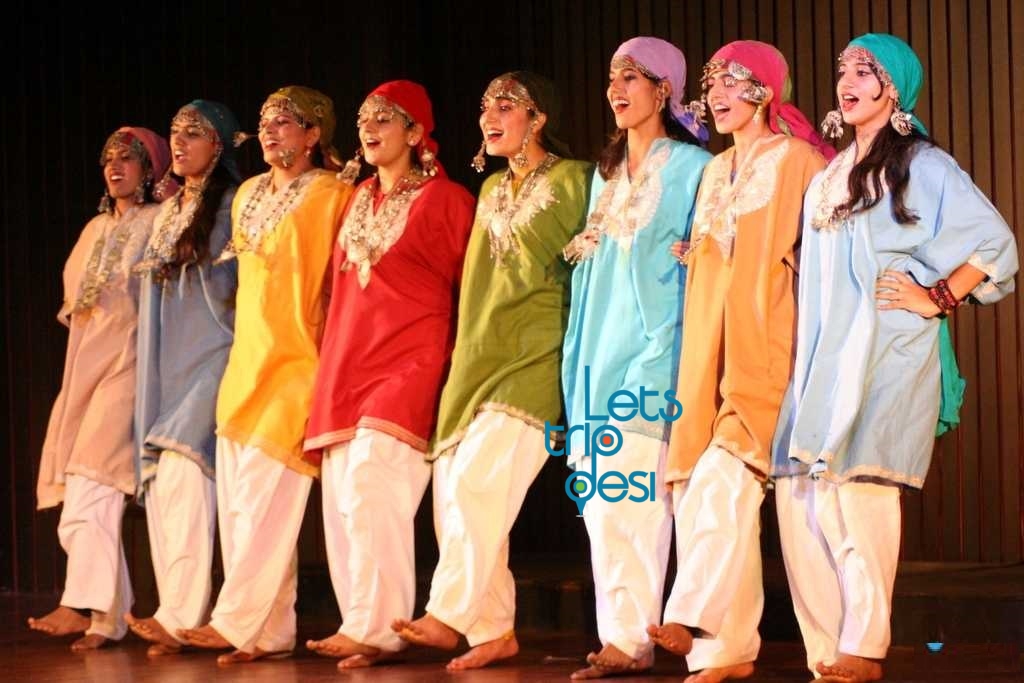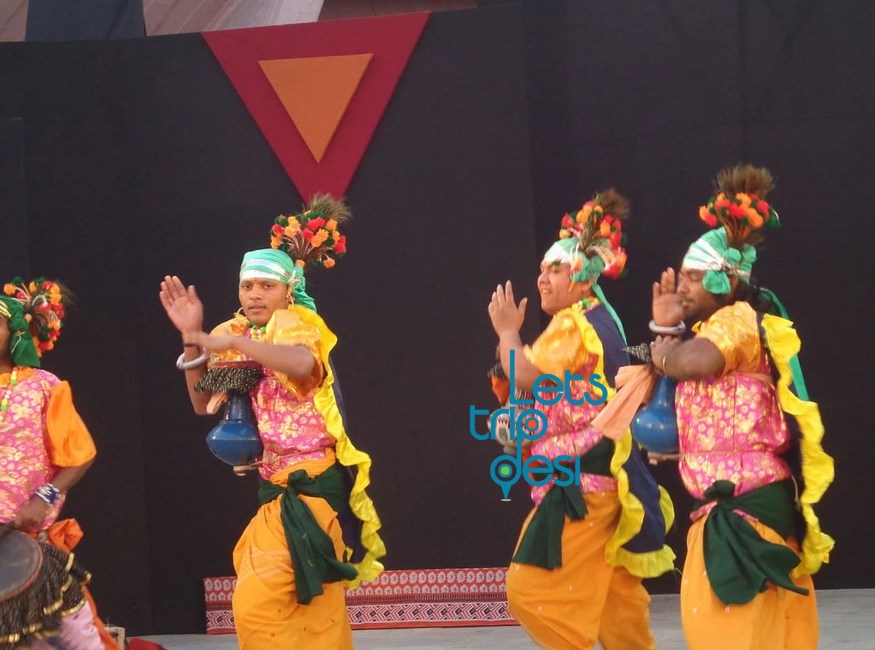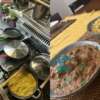India is known for its rich cultural heritage. folk dance of Maharashtra Diversification is the identity of the country. Indian dance is one of the most revered identities of our culture. Folk Dance From India Here is detail of Dance of Assam, Rajasthan, Maharashtra and Punjab one of the most revered identities of our culture.
In India, dance forms can be broadly classify into 2 categories- classical and folk-dance form.
These dance forms have originate from different parts of India as per the local tradition.
India is a land of varied cultures and traditions. Diversities in all spheres make the Indian culture quite unique. Indian folk and tribal dances are product of different socio-economic set up and traditions evolve over ages. In India, we have festivals and celebrations virtually every day, folk dance of Maharashtra and dances are perform to express joy and festivity.
This has add to the richness of Indian culture. Since every festival is accompanied by celebration, folk dances have become an integral part of our social milieu. folk dance Assam There are numerous folk and tribal dances, and almost all of them have continuously evolved and improvise.
Folk dances are perform for every possible occasion – to celebrate the arrival of seasons, birth of a child, a wedding and festivals, which are a plenty. folk dance Rajasthan folk dance of Maharashtra is extremely simple with minimum of steps or movement.
Indian folk dances are full of energy and vitality.
Some dances are perform separately by men and women while in some performances men and women dance together. On most occasions, the dancers sing themselves, accompanied by artists with instruments. Each form of folk dance has a specific costume and rhythm. Most of the costumes, worn for folk dances, are colorful with extensive jewels and designs. Let’s have a look at folk dances of India.
The Indian States and Folk Dances
| State | Folk Dances |
|---|---|
| Andhra Pradesh | Kuchipudi, Vilasini Natyam, Andhra Natyam, Bhamakalpam, Veeranatyam, Dappu, Tappeta Gullu, Lambadi, Dhimsa, Kolattam, Butta Bommalu. |
| Assam | Bihu, Bichhua, Natpuja, Maharas, Kaligopal, Bagurumba, Naga dance, Khel Gopal, Tabal Chongli, Canoe |
| Bihar | Jata-Jatin, Bakho-Bakhain, Panwariya, Sama Chakwa. |
Gujarat |
Garba, Dandiya Ras, Tippani Juriun, Bhavai. |
| Haryana | Jhumar, Phag, Daph, Dhamal, Loor, Gugga, Khor, Gagor. |
| Himachal Pradesh | Jhora, Jhali, Chharhi, Dhaman, Chhapeli, Mahasu, Nati, Dangi. |
| Jammu and Kashmir | Rauf, Hikat, Mandjas, Kud Dandi Nach, Damali. |
| Karnataka | Yakshagan, Huttari, Suggi, Kunitha, Karga, Lambi. |
| Kerala | Kathakali (Classical), Ottam Thulal, Mohiniattam, Kaikottikali. |
| Maharashtra | Lavani, Nakata, Koli, Lezim, Gafa, Dahikala Dasavtar or Bohada. |
| Odisha | Odissi (Classical), Savari, Ghumara, Painka, Munari, Chhau. |
| West Bengal | Kathi, Gambhira, Dhali, Jatra, Baul, Marasia, Mahal, Keertan. |
| Punjab | Bhangra, Giddha, Daff, Dhaman, Bhand, Naqual. |
| Rajasthan | Ghumar, Chakri, Ganagor, Jhulan Leela, Jhuma, Suisini, Ghapal, Kalbeliya. |
| Tamil Nadu | Bharatanatyam, Kumi, Kolattam, Kavadi. |
| Uttar Pradesh | Nautanki, Raslila, Kajri, Jhora, Chappeli, Jaita. |
| Uttarakhand | Garhwali, Kumayuni, Kajari, Jhora, Raslila, Chappeli. |
| Goa | Tarangamel, Koli, Dekhni, Fugdi, Shigmo, Ghode, Modni, Samayi nrutya, Jagar, Ranmale, Gonph, Tonnya mell. |
| Madhya Pradesh | Jawara, Matki, Aada, Khada Nach, Phulpati, Grida Dance, Selalarki, Selabhadoni, Maanch. |
Chhattisgarh |
Gaur Maria, Panthi, Raut Nacha, Pandwani, Vedamati, Kapalik, Bharthari Charit, Chandaini. |
| Jharkhand | Alkap, Karma Munda, Agni, Jhumar, Janani Jhumar, Mardana Jhumar, Paika, Phagua,Hunta Dance, Mundari Dance, Sarhul, Barao, Jhitka, Danga, Domkach, Ghora Naach. |
| Arunachal Pradesh | Buiya, Chalo, Wancho, Pasi Kongki, Ponung, Popir, Bardo Chham. |
| Manipur | Dol Cholam, Thang Ta, Lai Haraoba, Pung Cholom, Khamba Thaibi, Nupa Dance, Raslila, Khubak Ishei, Lhou Sha. |
| Meghalaya | Ka Shad Suk Mynsiem, Nongkrem, Laho. |
| Mizoram | Cheraw Dance, Khuallam, Chailam, Sawlakin, Chawnglaizawn, Zangtalam, Par Lam, Sarlamkai/Solakia, Tlanglam. |
| Nagaland | Rangma, Bamboo Dance, Zeliang, Nsuirolians, Gethinglim, Temangnetin, Hetaleulee. |
| Tripura | Hojagiri. |
| Sikkim | Chu Faat Dance, Sikmari, Singhi Chaam or the Snow Lion Dance, Yak Chaam, Denzong Gnenha, Tashi Yangku Dance, Khukuri Naach, Chutkey Naach, Maruni Dance. |
Lakshadweep |
Lava, Kolkali, Parichakali. |
Origin of Indian Dance Forms
Indian dances can be traced back to ancient times. In the cave paintings of Bhimbetka rock shelters in Madhya Pradesh, one can see dancing figures. The sculptures that date back to the Indus Valley Civilization also portray dancing figures. The text related to the origin of dance in India can be found in Natya Shastra, folk dance Rajasthan which was written by the sage Bharata. This text dates back to the 2nd century AD. In this text, the creation of dance is credited to Lord Brahma, who takes its knowledge from the four Vedas.
Classical Dances of India:
If you are not checking Classical Dance of India with Folk Dances of India, then you had missed a very important thing. Indian classical dance academy i.e., Shastriya Academi. All these dances are connected to the Hindu Goddess. These are performed by very talented, trained and skilled artists.
The list of classical dances in India is given below:
| List of Classical dances in India | State of Origin |
| Bharatnatyam | Tamil Nadu |
| Kathak | Uttar Pradesh |
| Kuchipudi | Andhra Pradesh |
| Odissi | Odisha |
| Kathakali | Kerala |
| Sattriya | Assam |
| Manipuri | Manipur |
| Mohiniyattam | Kerala |
Rouff – Jammu and Kashmir
The traditional folk dance from the beautiful Kashmir Valley region of Jammu and Kashmir. Dumhal is another folk dance of Jammu and Kashmir, performed on set occasions and at set locations.
Performed by the Kashmiri people to celebrate their festivals and important occasions, Rouf is a soothing dance form generally performed by the female dancers on the traditional Kashmiri music.

Bhangra – Punjab
The folk dance of from the Punjab region of the Indian subcontinent. Folk dance of punjab mostly performed during the harvest festival of Baisakhi. Bhangra and Giddha are two most famous folk dance of Punjab, folk dance of punjab practice and perform out of India as well.
Belonging to Punjab, folk dance of punjab Bhangra is a heart-pumping dance adorned with the loud beats of dhol( traditional Indian instrument). It is very prevalent in traditional Punjabi folk dance of punjab festivals.

Garba – Gujarat
The traditional garba dance from Gujarat state, performed around the statue of the Goddess Shakti during the festival of Navratri. Garba and Dandiya raas are two most famous dance form from Gujarat as well in the world.
Garba comes from Gujarat which is a traditional dance form dedicated to Goddess Durga. It is performed in a couple on the typical Gujarati music, and the sticks are used to perform this art form.

Ghoomar – Rajasthan
The traditional folk dance from the royal Rajasthan, performed by women of the Bhil tribes along with other Rajasthani communities. Ghoomar in among the list of world’s top folk dance Rajasthan 10 most amazing local dances from India.
Wearing heavy jewellery and the beautiful costumes you will find the people of Rajasthan dancing folk dance rajasthan on the beats of music to give away their traditional dance form. folk dance rajasthan Ghoomar includes the intriguing circular movements complemented by the hand gestures.

Bihu – Assam
The folk dance from the state of Assam, perform during the festival of Bihu, folk dance assam one of the three cultural festivals of Assam. Bihu dance is a group dance perform with traditional Bihu music.
Young men and women mostly perform this joyous folk dance from Assam during the Bihu festival. The dancers follow a pattern of rapid hand movement, quick steps and a rhythmic swaying of hips wearing the traditional Assamese clothing with beautiful accessories.
folk dance assam Marking the beginning of spring season, Bihu recites the happiness and heritage of Assam and is perform on the occasion of Rangie Bihu. The dhol, folk dance assam Xutuli, Toka, Baanhi, folk dance assam Gogona are the instruments use to play the traditional tunes for the performance.
The origin of Bihu is not very known, folk dance assam although the records profoundly state that it is originat from the Bihu dance perform by communities of Upper Assam like the Sonowal Kacharis, Deoris, Moran, Chutias and Borahis. The dance form isn’t just known in India but globally popular. This popular Indian Dance was perform at the London Olympics in 2012.

Lavani – Maharashtra
Originate from the state of the Maratha empire, folk dance of maharashtra Lavani is a dance form of Maharashtra. The female-orient dance is a blend of traditional music and tales of deities. The origin of Lavani comes from the word Lavanya which means beauty. Apart from helping in the up liftmen of the Marathi folk theatre, folk dance of maharashtra the dance form was also a morale booster during the war in the 18th century.

Lavani and the other that’s sensual- Shringar Lavani. With the powerful and quick foot-tapping tempo, the dance form is perform along with the beats of the Dholak. The stories or subjects this dance is base on revolves around topics of religion, politics, society and mostly romance. Dancers are dress in nine-yard of saree with golden jewellery. The dance was initially stage at local temples in the form of worship, but now it’s a sensual dance perform to the pulsating beats rendering a socio-political satire.
A combination of traditional song and folk dance perform to the beats of Dholki in the state of Maharashtra. Lavani folk dance is also popular in other states of Madhya Pradesh, Karnataka and Tamil Nadu
Bharatnatyam-Tamil Nadu
Perform on the celestial tunes of the Carnatic music, Bharatnatyam comes from the state of Tamil Nadu in South. The origins of Bharatnatyam can be trace back to 1000 BC, and it originates from the ancient temples of Tamil Nadu perform by the women of the classical period.

The dance form is known for its beautiful body movements and gestures which are call Mudras in the traditional language. It focuses on the hand gestures, leg movement and the facial expressions of the dancer. This dance form was very prevalent before the British era but was profoundly depress during the colonial period.
However, India keep the dance form alive in the houses, and today it is recognize as one of the most respectable art forms in India especially in the Southern region of the country where it is a moment of pride for the women of the house to learn the classical dance form of Bharatnatyam
Karakattam is ancient tamil folk dance, perform balancing a pot on the head in Tamil Nadu. Tamil Nadu offers the many folk dance such as Chakkai Attam, Kali Attam, Ottan Koothu and Thappaattam.
Ghumura of Odisha
One of the most after dances in Odisha, Ghumra is similar to a tribal dance, because of the dress that is while performing it. Research suggests that it was regard as a war dance in ancient India and was perform by Ravana in the Ramayana. Its roots in the Medieval period are confirm by the fact that this dance is depict in the Sun Temple, Konark. The movements and expressions use in the dance make it a “heroic dance.”

Kalikapatadi of West Bengal
This Bengali folk dance revolves around the mythological story of how Lord Shiva calms down Goddess Kali after killing Asura. The dance is more prevalent in Howrah. Before the coronation of Shiva on Neelpuja Day (Chaitra Sankranti), the performance of this dance is consider a must. The green leaves of water hyacinth are use to make the hair of Kali and the black ash to decorate the body. But Clay mask is use for Mahadeva. Palm leaves redden with alta are use to symbolize the tongue of Kali. The performers usually go on a fast for the day as a form of worship.

Yakshagana of Karnataka
This is a classical dance drama with music, dance depicting a story with dialogues and unique costumes. So Yakshagana is also know as aataā in Kannada and Tulu (‘play’). Yakshagana literally means the song (gana) of a yaksha. Because Yakshas were an exotic tribe mention in the Sanskrit literature of ancient India.
Also Read : 15 Best Beaches in Goa You Must Visit

Kathakali of Kerala
Katha means story and kali means play – Kathakali is one of the oldest theatre forms in the world. Similarly Originating more than 1500 years ago, Firstly this is a combination of dance, drama, music and ritual. Because Note for elaborate costumes, attractive make-up done on the characters, detail gestures and well define body movements present in tunes.
Also Read :Best 8 Places To Visit In Manali

Raas Leela of Uttar Pradesh
Popular in the region of Mathura and Vrindavan of Uttar Pradesh. Secondly And is associate with the festival of Holi and Janmashtami. Moreover It is a part of the mythological stories of Lord Krishna where he dances with Radha and sakhis. It is regard as the “dance of the divine love. In Other Words The Indian classical dance Kathak evolve from Raas Leela of Braj and Manipuri classical dance. folk dance from india Raas Leela has been a popular theme in many other classical dance forms.

1. How many Indian classical dances are there?
There are 9 Classical Dance forms of India as of the latest source.
2. What are the 8 popular folk dance of India?
Here is the list of 8 Famous Traditional Folk Dance Forms of India:
- Bhangra – Punjab,
- Jhumar – Haryana,
- Garba – Gujarat,
- Bihu – Assam,
- Hikat – Jammu and Kashmir,
- Lavani – Maharashtra,
- Kathakali – Kerala,
- Chhau Dance.
The etymological root of this word is trace back to the Sanskrit word ‘Chhaya’, so which means shade. After That This is in reference to the mask use by the dancers.
For Instance, in this dance form, there are a variety of themes. So, they are mostly base on everyday life, mythology, mood or emotions, and many more. But The rituals for Chhau are spread throughout year from Dussehra.
3. What are the 9 classical dance forms of India?
The list of nine Indian classical dances is so below:
- Bharatnatyam.
- Kathak.
- Kathakali.
- Kuchipudi.
- Odissi.
- Sattriya.
- Manipuri.
- Mohiniyattam.
- Chhau.



